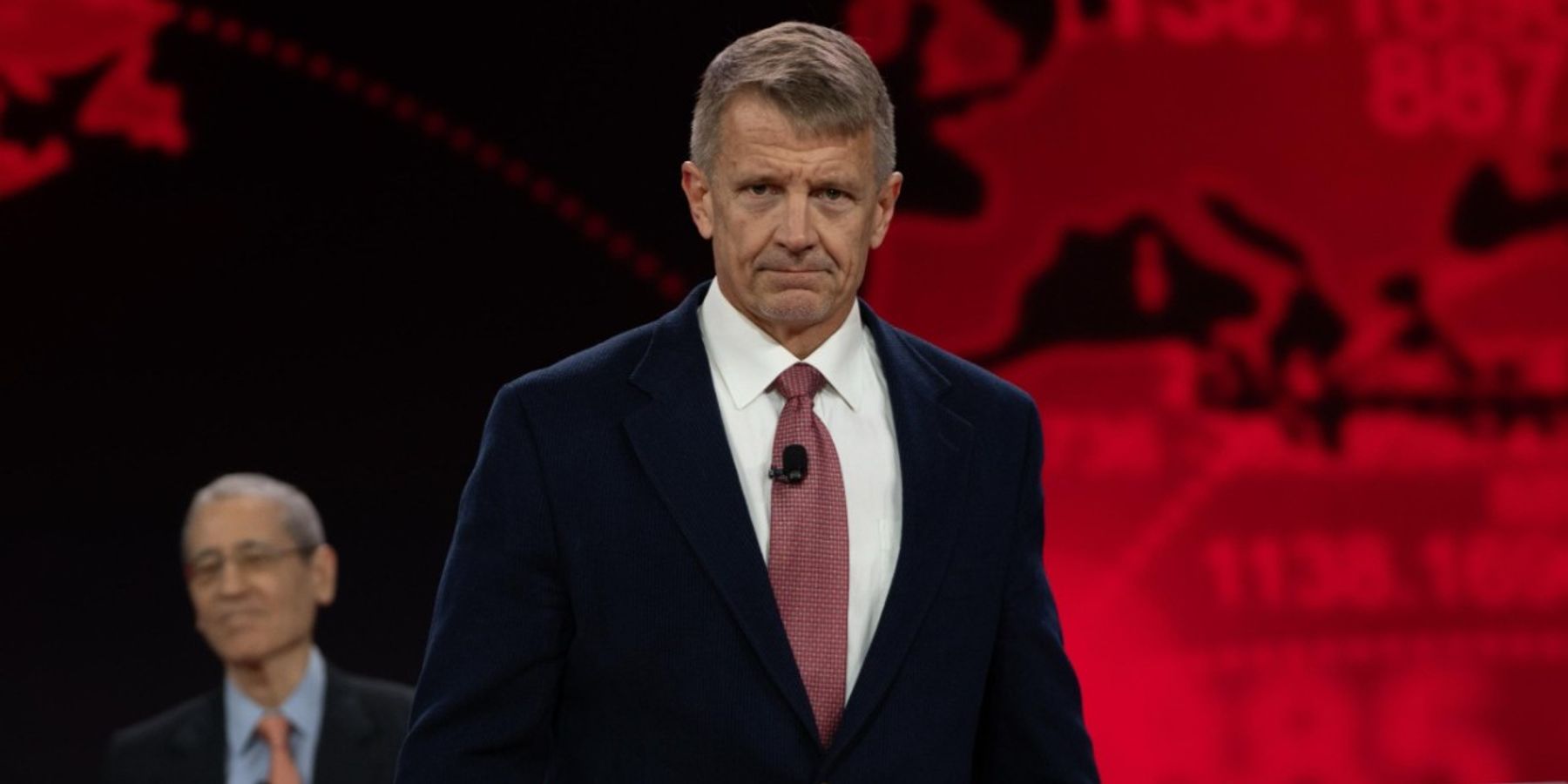It seems that former Blackwater CEO, international war profiteer, and wannabe colonialist Erik Prince is eager to get back into the action, this time on American soil. Politico reported today that a group of military contractors led by Prince delivered a 26-page proposal to President Donald Trump’s team before the inauguration, detailing how the new administration could enlist the private sector to hit its deportation goals.
The plan states that a “600% increase in activity” is needed for the President to deport 12 million people before the 2026 midterms — an increase that Prince and his allies don’t believe government agencies are equipped to make.
Among the ideas laid out in the $25 billion proposal: a private fleet of 100 deportation planes, privately-run processing camps on military bases, expedited mass deportation hearings, and a “bounty program which provides a cash reward for each illegal alien held by a state or local law enforcement officer.”
Former Trump Advisor Steve Bannon (who still has strong ties to key advisors on the President’s team) expressed support for the plan to Politico. “People want this stood up quickly, and understand the government is always very slow to do things,” he said.
The proposal has clear moral, financial, and legal concerns — but that goes without saying when Erik Prince is concerned.
Prince’s Blackwater Security Consulting group carried out a highly publicized massacre of 17 civilians at Nissour Square in Baghdad in 2007, causing the group to lose its security contract with the U.S. government. Four Blackwater employees were convicted by a U.S. federal court for their involvement in the massacre and then pardoned by President Trump in his first term.
Neither the tragedy of the Nissour Square Massacre nor the embarrassment it represented for the military contracting industry dissuaded Prince, who has continued to push for more privatization and less oversight in military operations.
Fortunately, it seems that his latest pet project isn’t gaining much traction.
Bill Matthews, a co-author of the proposal, told Politico, “We have not been contacted by, nor have we had any discussions with, the government since the White Paper that we submitted months ago. There has been zero show of interest or engagement from the government and we have no reason to believe there will be.”
















